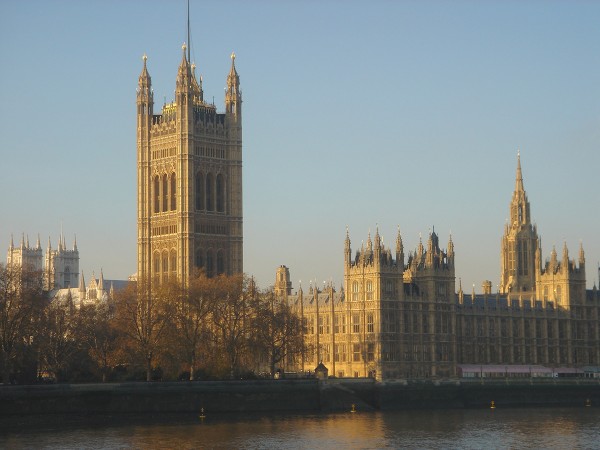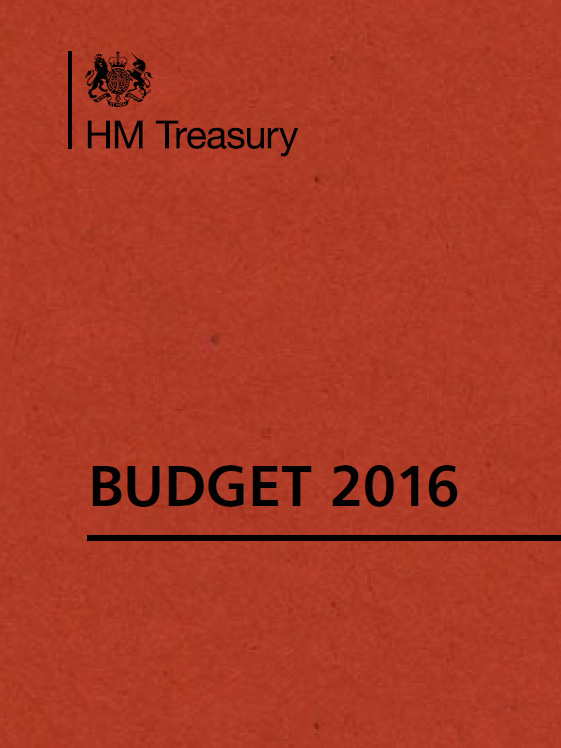 During the 1970s, commentators often referred to the ‘political business cycle’. As William Nordhaus stated in a 1989 paper. “The theory of the political business cycle, which analyzes the interaction of political and economic systems, arose from the obvious facts of life that voters care about the economy while politicians care about power.”
During the 1970s, commentators often referred to the ‘political business cycle’. As William Nordhaus stated in a 1989 paper. “The theory of the political business cycle, which analyzes the interaction of political and economic systems, arose from the obvious facts of life that voters care about the economy while politicians care about power.”
In the past, politicians would use fiscal, and sometimes monetary, policies to manipulate aggregate demand so that the economy was growing strongly at the time of the next election. This often meant doing unpopular things in the first couple of years of office to allow for popular things, such as tax cuts and increased government transfers, as the next election approached. This tended to align the business cycle with the election cycle. The economy would slow in the early years of a parliament and expand rapidly towards the end.
To some extent, this has been the approach since 2010 of first the Coalition and now the Conservative governments. Cuts to government expenditure were made ‘in order to clear up the mess left by the previous government’. At the time it was hoped that, by the next election, the economy would be growing strongly again.
 But in adopting a fiscal mandate, the current government could be doing the reverse of previous governments. George Osborne has set the target of a budget surplus by the final year of this parliament (2019–20) and has staked his reputation on achieving it.
But in adopting a fiscal mandate, the current government could be doing the reverse of previous governments. George Osborne has set the target of a budget surplus by the final year of this parliament (2019–20) and has staked his reputation on achieving it.
The problem, as we saw in the blog, Hitting – or missing – the government’s self-imposed fiscal targets is that growth in the economy has slowed and this makes it more difficult to achieve the target of a budget surplus by 2019–20. Given that achieving this target is seen to be more important for his reputation for ‘sound management’ of the public finances than that the economy should be rapidly growing, it is likely that the Chancellor will be dampening aggregate demand in the run-up to the next election. Indeed, in the latest Budget, he announced that specific measures would be taken in 2019–20 to meet the target, including a further £3.5 billion of savings from departmental spending in 2019–20. In the meantime, however, taxes would be cut (such as increasing personal allowances and cutting business rates) and government spending in certain areas would be increased. As the OBR states:
Despite a weaker outlook for the economy and tax revenues, the Chancellor has announced a net tax cut and new spending commitments. But he remains on course for a £10 billion surplus in 2019–20, by rescheduling capital investment, promising other cuts in public services spending and shifting a one-off boost to corporation tax receipts into that year.
But many commentators have doubted that this will be enough to bring a surplus. Indeed Paul Johnson, Director of the Institute for Fiscal Studies, stated on BBC Radio 4’s Today Programme said that “there’s only about a 50:50 shot that he’s going to get there. If things change again, if the OBR downgrades its forecasts again, I don’t think he will be able to get away with anything like this. I think he will be forced to put some proper tax increases in or possibly find yet further proper spending cuts”.
If that is the case, he will be further dampening the economy as the next election approaches. In other words, the government may be doing the reverse of what governments did in the past. Instead of boosting the economy to increase growth at election time, the government may feel forced to make further cuts in government expenditure and/or to raise taxes to meet the fiscal target of a budget surplus.
Articles
Budget 2016: George Osborne hits back at deficit critics BBC News (17/3/16)
George Osborne will have to break his own rules to win the next election Business Insider, Ben Moshinsky (17/3/16)
Osborne Accused of Accounting Tricks to Meet Budget Surplus Goal Bloomberg, Svenja O’Donnell and Robert Hutton (16/3/16)
George Osborne warns more cuts may be needed to hit surplus target Financial Times, Jim Pickard (17/3/16)
6 charts that explain why George Osborne is about to make austerity even worse Independent, Hazel Sheffield (16/3/16)
Budget 2016: Osborne ‘has only 50-50 chance’ of hitting surplus target The Guardian, Heather Stewart and Larry Elliott (17/3/16)
How will Chancellor George Osborne reach his surplus? BBC News, Howard Mustoe (16/3/16)
Osborne’s fiscal illusion exposed as a house of credit cards The Guardian, Larry Elliott (17/3/16)
The Budget’s bottom line: taxes will rise and rise again The Telegraph, Allister Heath (17/3/16)
Reports, analysis and documents
Economic and fiscal outlook – March 2016 Office for Budget Responsibility (16/3/16)
Budget 2016: documents HM Treasury (16/3/16)
Budget 2016 Institute for Fiscal Studies (17/3/16)
Questions
- Explain the fiscal mandate of the Conservative government.
- Does sticking to targets for public-sector deficits and debt necessarily involve dampening aggregate demand as an election approaches? Explain.
- For what reasons may the Chancellor not hit his target of a public-sector surplus by 2019–20?
- Compare the advantages and disadvantages of a rules-based fiscal policy and one based on discretion.
 Let’s say that the world slides back into recession, or at least, the eurozone, the USA and other major economies. This is not unthinkable, given the determination of many countries to reduce public-sector deficits and debt, concerns about slowing growth in China and other major developing countries, and worries about various geo-political developments, such as conflict in the Middle East and the possible exit of Greece from the euro and the shock waves this might send. If it happened, what could governments and central banks do to stimulate aggregate demand? The problem is, according to the linked articles below, the world has largely run out of policy instruments.
Let’s say that the world slides back into recession, or at least, the eurozone, the USA and other major economies. This is not unthinkable, given the determination of many countries to reduce public-sector deficits and debt, concerns about slowing growth in China and other major developing countries, and worries about various geo-political developments, such as conflict in the Middle East and the possible exit of Greece from the euro and the shock waves this might send. If it happened, what could governments and central banks do to stimulate aggregate demand? The problem is, according to the linked articles below, the world has largely run out of policy instruments.
In normal times, the main policy instruments for stimulating aggregate demand are cuts in interest rates (monetary policy) and increases in government expenditure and/or tax cuts (fiscal policy). But with interest rates currently at virtually zero, there is little scope for further cuts. And with governments attempting to ‘repair’ their balance sheets by cutting deficits, there is little appetite for increasing deficits again.
 It is possible that central banks could engage in further quantitative easing. Indeed, the ECB is only just starting its large QE programme, involving monthly bond purchases of €60bn until at least September 2016 (totalling €1.14tr at that point). But QE leads to market distortions, such as increased asset prices (e.g. share and house prices), made higher and more unstable by speculation. By providing ‘cheap money’, it also encourages potentially risky investments.
It is possible that central banks could engage in further quantitative easing. Indeed, the ECB is only just starting its large QE programme, involving monthly bond purchases of €60bn until at least September 2016 (totalling €1.14tr at that point). But QE leads to market distortions, such as increased asset prices (e.g. share and house prices), made higher and more unstable by speculation. By providing ‘cheap money’, it also encourages potentially risky investments.
The articles below considers the dilemma and looks at six possible options for policy makers suggested by Stephen King, chief economist at HSBC. But are they realistic? Read the articles and then consider the questions.
Financial crisis fixes leave policymakers short of ammo for next recession The Guardian, Larry Elliott (31/5/15)
How to get the economy working for us Guardian Letters, Mary Mellor; Colin Hines; Martin London; William Dixon and David Wilson (2/6/15)
HSBC’s Stephen King Outlines “Economic Nightmare” ValueWalk (14/5/15)
HSBC: Central Banks Are Running Low on Ammunition Bloomberg, Julie Verhage (13/5/15)
If the US economy is signalling an iceberg, bad news: we’re out of lifeboats The Guardian, Nils Pratley (13/5/15)
Policy makers lack the firepower to fight another US recession Financial Times, Stephen King (18/5/15)
 The new surrealism Global Economics Quarterly, Stephen King (Q2, 2015)
The new surrealism Global Economics Quarterly, Stephen King (Q2, 2015)
Questions
- What are the risks to global recovery?
- Why has recovery from the 2008/9 recession been slower than that from previous recessions?
- What are the traditional instruments for combatting a recession?
- Why might central banks be wary of engaging in further rounds of quantitative easing?
- What is meant by ‘helicopter money’? Would this be a better solution to a recession than quantitative easing?
- Go through the other five policy options identified by Stephen King and discuss the suitability of each one.
 What lies ahead for economic growth in 2013 and beyond? And what policies should governments adopt to aid recovery? These are questions examined in four very different articles from The Guardian.
What lies ahead for economic growth in 2013 and beyond? And what policies should governments adopt to aid recovery? These are questions examined in four very different articles from The Guardian.
The first is by Nouriel Roubini, Professor of Economics at New York University’s Stern School of Business. He was one of the few economists to predict the collapse of the housing market in the USA in 2007 and the credit crunch and global recession that followed. He argues that continuing attempts by banks, governments and individuals to reduce debt and leverage will mean that the advanced economies will struggle to achieve an average rate of economic growth of 1%. He also identifies a number of other risks to the global economy.
 In contrast to Roubini, who predicts that ‘stagnation and outright recession – exacerbated by front-loaded fiscal austerity, a strong euro and an ongoing credit crunch – remain Europe’s norm’, Christine Lagarde, head of the IMF and former French Finance Minister, predicts that the eurozone will return to growth. ‘It’s clearly the case’, she says, ‘that investors are returning to the eurozone, and resuming confidence in that market.’ Her views are echoed by world leaders meeting at the World Economic Forum in Davos, Switzerland, who are generally optimistic about prospects for economic recovery in the eurozone.
In contrast to Roubini, who predicts that ‘stagnation and outright recession – exacerbated by front-loaded fiscal austerity, a strong euro and an ongoing credit crunch – remain Europe’s norm’, Christine Lagarde, head of the IMF and former French Finance Minister, predicts that the eurozone will return to growth. ‘It’s clearly the case’, she says, ‘that investors are returning to the eurozone, and resuming confidence in that market.’ Her views are echoed by world leaders meeting at the World Economic Forum in Davos, Switzerland, who are generally optimistic about prospects for economic recovery in the eurozone.
The third article, by Aditya Chakrabortty, economics leader writer for The Guardian, looks at the policies advocated at the end of World War II by the Polish economist, Michael Kalecki and argues that such policies are relevant today. Rather than responding to high deficits and debt by adopting tough fiscal austerity measures, governments should adopt expansionary fiscal policy, targeted at expanding infrastructure and increasing capacity in the economy. That would have an expansionary effect on both aggregate demand and aggregate supply. Sticking with austerity will result in continuing recession and the ‘the transfer of wealth and power into ever fewer hands.’
 But while in the UK and the eurozone austerity policies are taking hold, the new government in Japan is adopting a sharply expansionary mix of fiscal and monetary policies – much as Kalecki would have advocated. The Bank of Japan will engage in large-scale quantitative easing, which will become an open-ended commitment in 2014, and is raising its inflation target from 1% to 2%. Meanwhile the Japanese government has decided to raise government spending on infrastructure and other government projects.
But while in the UK and the eurozone austerity policies are taking hold, the new government in Japan is adopting a sharply expansionary mix of fiscal and monetary policies – much as Kalecki would have advocated. The Bank of Japan will engage in large-scale quantitative easing, which will become an open-ended commitment in 2014, and is raising its inflation target from 1% to 2%. Meanwhile the Japanese government has decided to raise government spending on infrastructure and other government projects.
So – a range of analyses and policies for you to think about!
Risks lie ahead for the global economy The Guardian, Nouriel Roubini (21/1/13)
Eurozone showing signs of recovery, says IMF chief The Guardian, Graeme Wearden (14/1/13)
Austerity? Call it class war – and heed this 1944 warning from a Polish economist The Guardian, Aditya Chakrabortty (14/1/13)
Bank of Japan bows to pressure with ‘epoch-making’ financial stimulus The Guardian, Phillip Inman (22/1/13)
Questions
- What are the dangers facing the global economy in 2013?
- Make out a case for sticking with fiscal austerity measures.
- Make out a case for adopting expansionary fiscal policies alongside even more expansionary monetary policies.
- Is is possible for banks to increase their capital-asset and liquidity ratios, while at the same time increasing lending to business and individuals? Explain.
- What are the implications of attempts to reduce public-sector deficits and debt on the distribution of income? Would it be possible to devise austerity policies that did not have the effect you have identified?
- What will be the effect of the Japanese policies on the exchange rate of the yen with other currencies? Will this be beneficial for the Japanese economy?
 More and more food banks are opening every week across the developed world. In the UK alone, there are over 250 food banks. These are run by volunteers and provide food and other basic provisions to those who struggle to feed themselves and their children. The food is donated by people or sometimes supermarkets. Some food banks receive financial help from local authorities.
More and more food banks are opening every week across the developed world. In the UK alone, there are over 250 food banks. These are run by volunteers and provide food and other basic provisions to those who struggle to feed themselves and their children. The food is donated by people or sometimes supermarkets. Some food banks receive financial help from local authorities.
According to the Trussell Trust, which runs many food banks in the UK, “In 2011-12 food banks fed 128,687 people nationwide, 100% more than the previous year.” But why, in mixed economies, where the State is expected to provide benefits to the poor, do so many people have to resort to food handouts?

Partly the problem is a cut in benefits – a response of many countries to rising public-sector deficits; partly it’s delays in receiving benefits or the complexities in claiming; partly it’s because some people have had their benefits suspended because of a change in their circumstances or changes in the conditions for claiming benefits; partly it’s the inability of people to afford to feed their families properly in times of rising food and energy prices and rising rents, where incomes are not rising in line with the personal rates of inflation that poor households experience; partly it’s the sky-high interest rates that many poor people, often deep in debt, have to pay to continue obtaining credit – often from ‘payday loan companies’ or ‘doorstep lenders’; partly it’s the inability of many poor people to find work which pays enough to feed their families and pay all their other bills.
Food poverty is a real and growing problem. But are food banks the answer? The following videos and articles look at the issues.
Webcasts
UK
 Growing demand for food banks in Britain BBC Newsnight, Paul Mason (5/9/12)
Growing demand for food banks in Britain BBC Newsnight, Paul Mason (5/9/12)
 Children will go hungry warn Bristol food banks This is Bristol, (2/7/12)
Children will go hungry warn Bristol food banks This is Bristol, (2/7/12)
 Children going hungry ITV News (16/10/12)
Children going hungry ITV News (16/10/12)
 Food bank: We need more food to feed UK’s hungry The Telegraph, Gregg Morgan (27/9/12)
Food bank: We need more food to feed UK’s hungry The Telegraph, Gregg Morgan (27/9/12)
 Food banks help struggling London families BBC News (21/6/12)
Food banks help struggling London families BBC News (21/6/12)
Europe
 EU food aid to dry up by 2014? France 24 (16/10/12)
EU food aid to dry up by 2014? France 24 (16/10/12)
Spain
 Food banks squeezed in Spain Euronews (3/11/12)
Food banks squeezed in Spain Euronews (3/11/12)
USA
 As donations dwindle, food banks are feeling the pinch Komo News, Elisa Jaffe (28/9/12)
As donations dwindle, food banks are feeling the pinch Komo News, Elisa Jaffe (28/9/12)
Articles
UK
Breadline Britain: councils fund food banks to plug holes in welfare state The Guardian, Patrick Butler (21/8/12)
Councils to invest in food banks LocalGov, Dominic Browne (22/8/12)
The growing demand for food banks in breadline Britain BBC News, Paul Mason (4/9/12)
Food banks: ‘I had no-one else to turn to’ BBC News (4/9/12)
Poorest starved of dignity as charity food parcels double in just two years Daily Record (4/9/12)
More and more banking on generosity to others for food South Wales Evening Post (13/11/12)
USA
Northern Illinois Food Bank Kicks Off Hunger Action Month St. Charles Patch, Rick Nagel (1/9/12)
Australia
More families get help as food becomes discretionary spend Sydney Morning Herald (21/8/12)
Information
How a foodbank works The Trussell Trust
Questions
- Why do so many people find themselves trapped in food poverty?
- What factors are likely to lead to an increase in food poverty in the coming months?
- Should the government subsidise food banks?
- Discuss ways of tackling the problem of poor families being trapped in debt and having to pay very high interest rates.
- Is rent control a good means of tackling poverty?
 If one person saves more, then it will increase that person’s consumption possibilities in the future. If, however, everyone saves more, and hence spends less, then businesses will earn less and are likely to respond by producing less if the decline in aggregate demand continues. Hence if a country saves more, people could be worse off. That’s the paradox of thrift.
If one person saves more, then it will increase that person’s consumption possibilities in the future. If, however, everyone saves more, and hence spends less, then businesses will earn less and are likely to respond by producing less if the decline in aggregate demand continues. Hence if a country saves more, people could be worse off. That’s the paradox of thrift.
There is considerable debate around the world at the moment about the desirability of austerity policies. The debate has become more intense with the worsening economic outlook in many European countries and with the election in France of François Hollande who rejects many of the austerity measures of his predecessor, Nicolas Sarkozy.
 But can further stimulus be given to aggregate demand without causing a further worsening of countries’ public-sector debt positions and causing a fall in confidence in financial markets? And how would that impact on investment?
But can further stimulus be given to aggregate demand without causing a further worsening of countries’ public-sector debt positions and causing a fall in confidence in financial markets? And how would that impact on investment?
And in the meantime, as the economic outlook darkens, people are trying to save more, despite low interest rates. The paradox of thrift seems to be getting more acute. (Click here for a PowerPoint of the chart.)
Articles
How National Belt-Tightening Goes Awry New York Times, Robert J. Shiller (19/5/12)
Japan disease is spreading: High risk and low returns Firstpost (India), Vivek Kaul (17/5/12)
The Solution can not be More Debt Huffington Post, Jill Shaw Ruddock (29/5/12)
Crediting debt Breaking Views, Edward Hadas (30/5/12)
Green investments can overcome the paradox of thrift New Statesman, Dimitri Zenghelis (7/6/12)
Austerity has never worked Guardian, Ha-Joon Chang (4/6/12)
The False Choice Between Austerity And Growth Forbes (24/5/12)
It’s not a case of austerity v stimulus for Europe Guardian, Paul Haydon (1/6/12)
Data
UK households’ saving ratio: series NRJS ONS
Household saving rates for OECD countries StatExtracts: OECD
Questions
- Why may we be experiencing a paradox of thrift at the current time?
- What are the arguments for the use of fiscal and monetary policies to expand aggregate demand at the current time?
- What are the arguments against the use of fiscal and monetary policies to expand aggregate demand at the current time?
- Can economic growth be stimulated by a redistribution of aggregate demand and, if so, in what way?
- Can green investment overcome the paradox of thrift?
- To what extent are demand-side and supply-side policies (a) complementary; (b) contradictory? Or, to put the question another way, to what extent may policies to encourage growth in the long term damage growth in the short term and vice versa?
 During the 1970s, commentators often referred to the ‘political business cycle’. As William Nordhaus stated in a 1989 paper. “The theory of the political business cycle, which analyzes the interaction of political and economic systems, arose from the obvious facts of life that voters care about the economy while politicians care about power.”
During the 1970s, commentators often referred to the ‘political business cycle’. As William Nordhaus stated in a 1989 paper. “The theory of the political business cycle, which analyzes the interaction of political and economic systems, arose from the obvious facts of life that voters care about the economy while politicians care about power.” But in adopting a fiscal mandate, the current government could be doing the reverse of previous governments. George Osborne has set the target of a budget surplus by the final year of this parliament (2019–20) and has staked his reputation on achieving it.
But in adopting a fiscal mandate, the current government could be doing the reverse of previous governments. George Osborne has set the target of a budget surplus by the final year of this parliament (2019–20) and has staked his reputation on achieving it.








